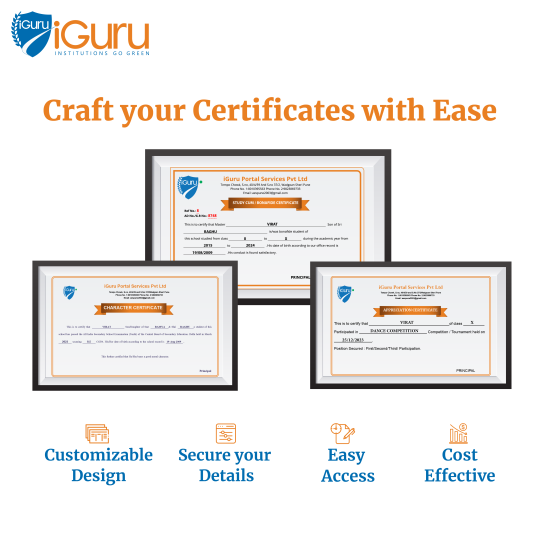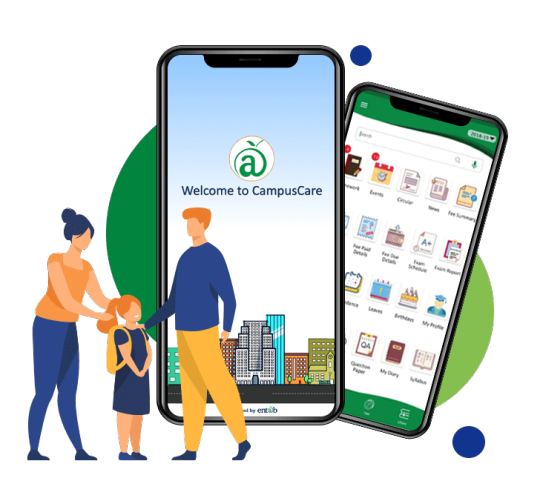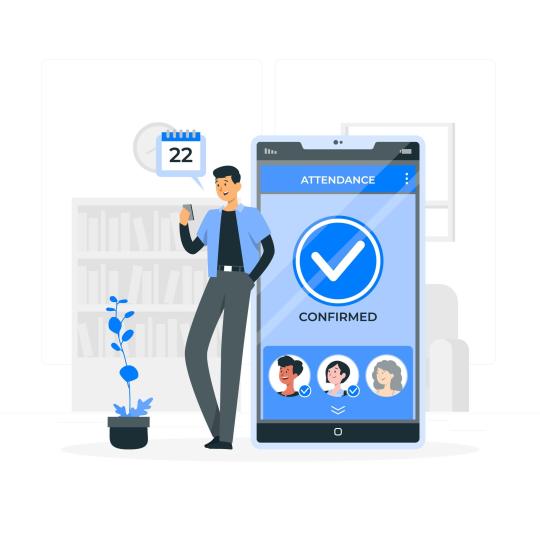#school software
Text
Going Paperless: How a School and Education Management Software is Transfiguring Administrative Processes

Discover how school and education management software are transforming the education sector towards a sustainable and efficient future by facilitating paperless administrative processes. Contact to know more: [email protected] or call us at +91 99425 76886.
#startup#school#school system#marketing#school software#education software#management software#school management software#education management software#preschool#preskool#software#development#application#apps#education#college#university#academia#institute
2 notes
·
View notes
Text
🎯 OpenEduCat education management system is designed to empower educational Institutes for success.
Elevate Your Institution's Management with OpenEduCat 🌟
https://openeducat.org/
#erp for school#school erp#erp for education#student information system#school software#school management software#education erp software#education#online education#school management system
0 notes
Text

Seamless, efficient, and ready for print – celebrate success like never before!
Whether it's predefined certificates or bespoke designs for them, empower your students and teachers with personalized certificates – because achievements deserve the spotlight! 🏆✨
#certificate#indian schools#automation#education software development#school erp software#school management system#edtech#school software#school erp system#high school#school#college#academics
0 notes
Text
Top Key Tips to Manage School Inventory Effectively

Navigating Challenges in School Inventory Management:
1.Textbook Tracking Complexity: The nuanced process of overseeing textbooks distributed across various classes demands a sophisticated system. This is particularly true during the annual distribution and collection phases, making it crucial to have a robust tracking mechanism in place.
2. Fortifying Asset Security: The susceptibility of school equipment to theft underscores the necessity for stringent security measures. Safeguarding these assets is paramount to preventing financial losses and ensuring uninterrupted educational operations.
3. Managing Inter-School Transfers: The complexity of inventory management is compounded when assets necessitate transfers between schools or districts. A streamlined solution is imperative to manage these intricate logistics seamlessly.
4. Mitigating Manual Tracking Challenges: The labor-intensive nature and inherent error-proneness of manual tracking emphasize the urgency of adopting automated systems. These systems not only alleviate the burden on administrative staff but also drastically reduce the margin for errors.
Efficient School Inventory Management Strategies:
1.Strategic Asset Tagging: Implementing a robust system of tagging assets with unique identifiers, such as barcodes or RFID tags, is foundational. This not only expedites the tracking process but also ensures accuracy. The system records vital information, including whether an asset is checked in or out, providing real-time visibility.
2. Regular Audits for Precision: Conducting regular audits is instrumental in maintaining control over the school’s inventory. School ERP software emerges as a key player in this scenario by providing accurate records and customizable reporting. This ensures that any discrepancies between recorded and actual assets are swiftly identified and addressed.
3. Preserving Data Through Backup Schedules: Instituting robust backup schedules is a proactive measure for safeguarding critical data. The adoption of cloud-based storage solutions offered by School ERP software adds an extra layer of security, ensuring data integrity and availability.
4. Maintaining Impeccable Records: Consistently maintaining accurate records is not just a procedural requirement; it forms the bedrock for informed financial analysis. School ERP software excels in streamlining this process, providing administrators with a reliable and efficient means of maintaining impeccable records.
5. Empowering Through Report Generation: Reporting stands as a cornerstone of effective inventory management. School administrators and stock managers can leverage School ERP software for seamless report generation. This optimization not only enhances operational efficiency but also provides a cost-effective approach to managing inventory.
Benefits of Embracing Cloud-Based School Inventory Management Software:
1.Swift Audits for Enhanced Efficiency: Streamlined audits, facilitated by cloud-based solutions, significantly enhance efficiency and accuracy in the management of educational inventory.
2. Proactive Prevention of Lost Items: A meticulously organized system, driven by cloud-based technology, serves as a proactive measure against the loss of valuable assets, ensuring systematic tracking and retrieval.
3. Financial Savings Through Property Insurance: Efficient inventory management, supported by cloud-based systems, can contribute to tangible financial savings through reduced property insurance costs.
4. Centralized Information Hub: The adoption of cloud-based systems centralizes vital asset-related information, simplifying access and management. This centralized hub becomes an invaluable resource for administrators, providing comprehensive insights into the institution’s inventory.
5. Tax Reduction Through Systematic Management: A well-managed inventory system can contribute to reduced tax burdens for educational institutions. Cloud-based solutions provide a systematic approach to inventory management, ensuring compliance and potentially reducing tax liabilities.
6. Time Savings Through Streamlined Processes: The efficiencies gained through streamlined processes, facilitated by cloud-based solutions, translate to significant time savings for educational institutions. This enables administrators to allocate time and resources more strategically.
7. Precision in Reporting for Informed Decision-Making: Cloud-based systems not only facilitate accurate reporting but also empower administrators with insights into asset status and requirements. This precision in reporting becomes a cornerstone for informed decision-making, contributing to the overall efficiency of educational operations.
Conclusion:
Effective inventory management emerges as a linchpin for educational institutions striving for excellence. School inventory management systems, particularly those leveraging cloud-based technologies, empower institutions to not only track their assets with precision but also allocate budgets more effectively. The optimization of inventory management becomes a strategic move in the pursuit of educational excellence, ensuring that resources are utilized optimally and the learning experience for students is enhanced. In embracing the benefits of advanced inventory management software, educational institutions embark on a transformative journey toward operational efficiency and financial prudence.
0 notes
Text
As technology advances at a rapid pace in our modern, digital era, it is critical to implement new technologies across multiple industries. In any school, managing, the school's daily operations can be a hectic task. ERP, or enterprise resource planning, is commonly used to help schools manage their day-to-day operations.
#e school erp#school software#best school software#school management system#school management software#erpsoftware#student management system
0 notes
Text
n Whether you re wanting to explore the concept of digital citizenship or seeking to educate others about it, our blog offers a comprehensive resource for all your needs Read now!
free demo for sweedu school management software
#school management software#school software#edicationsoftware#schoolsoftware#software#erpsoftware#schoolmanagementsoftware#schoolerpsoftware#digitalcitinzenship#digitalstudent
0 notes
Text
Virtual Classroom Software: A Powerful Tool for Enhanced Learning
Introduction:
The Digital Revolution in Education:
In the fast-paced and ever-changing digital era, the impact of information technology is not just limited to the way we work; it has also reshaped our approach to learning. With the integration of virtual classroom software and school management software, education and training have become more accessible, engaging, and user-friendly. This revolutionary change has led to significant growth in the worldwide e-learning market. The impact of virtual classrooms is profound and enduring, with the potential to redefine our traditional methods of teaching and learning. In this comprehensive exploration, we will take a closer look at what virtual classrooms are, their manifold benefits, and how they have the potential to revolutionize the field of education.
Understanding the Virtual Classroom:
The advent of advanced technology has made virtual classrooms a game-changer in the field of online learning. Incorporating modern software solutions like virtual classrooms and school management software, it provides students and teachers with an unparalleled educational experience, regardless of their location. The only requirement is a stable internet connection for both parties. Virtual classroom software takes care of the rest, providing a wide range of features like video and audio conferencing, digital whiteboards, access to learning materials, live chat support, and an array of teaching tools and controls. The primary objective of a virtual classroom is to recreate the traditional classroom experience in a virtual setting. It provides an environment where teachers can interact with students, monitor their progress, and offer personalized assistance, while students can learn, collaborate, and engage with their peers in real time. The software offers features such as video and audio conferencing, an online whiteboard, access to learning materials, live chat, and a suite of teaching tools and controls. Its main objective is to simulate the traditional classroom experience in an online setting.
The Multifaceted Benefits of Virtual Classroom Software:
Enhanced Collaboration:
In the past, collaborating between schools or organizations was difficult due to complex arrangements. Coordinating teachers and staff, travel, and scheduling was a time-consuming and costly process. However, virtual classroom software has made it easier by allowing uninterrupted communication and interaction between instructors and learners. Video conferencing is the key feature that enables collaborative engagement across geographical boundaries, making it possible for people to work together regardless of their location.
Improved Learning Processes:
Traditional educational institutions, particularly those in remote areas, often struggle with limited resources. Virtual classroom software transforms this scenario by enabling learners to access a global learning environment without leaving their physical classroom. Through real-time communication with experts from diverse fields and participation in remote seminars and classes, students can expand their horizons and enhance their knowledge retention. Additionally, virtual classroom software offers personalized learning, allowing learners to progress at their own pace, and reinforcing their understanding of subjects.
Accessibility:
Virtual classroom software democratizes education. Any learner with an internet connection and access to a computer, tablet, or smartphone can participate. This accessibility is particularly impactful for those living in rural areas or individuals who are physically constrained and unable to attend traditional classes. As a result, it promotes equal learning opportunities, regardless of geographic location or physical limitations.
Scalability:
One of the standout advantages of virtual classroom software is its scalability. It empowers educational institutions and organizations to customize the learning and teaching experience to suit the size of their audience and their skill levels. This flexibility is particularly beneficial for businesses, where training can be tailored to specific skill development needs. Unlike traditional classrooms, which require infrastructure expansion to accommodate growing numbers, virtual classrooms can accommodate larger groups effortlessly.
Affordability:
In contrast to traditional classrooms, virtual classroom software has demonstrated a remarkable ability to maintain cost-effectiveness. With the elimination of physical classrooms, expensive textbooks, and school supplies, virtual classrooms depend on digital tools and resources that are accessible at all times and from anywhere. This level of affordability has become a game-changer for educational institutions and businesses seeking to optimize their training programs.
Effectiveness:
Virtual classroom software is highly effective in comparison to traditional face-to-face education. The latter typically has a learning retention rate of 8% to 10%, while the former boasts a retention rate ranging from 25% to 60%. This substantial improvement is attributed to the personalization of teaching materials. With e-learning, learners have the freedom to progress at their own pace, revisit lectures as needed, and receive immediate feedback on their progress. This contributes to a more effective learning experience overall.
Conclusion:
In conclusion, virtual classroom software and school management software are powerful tools that provide numerous benefits to both learners and educators. These technologies have revolutionized education, making it accessible to a global audience. It's important to note that they don't replace teachers or educators, but rather enhance the teaching and learning processes, enabling students to achieve their full potential. As we continue to embrace the digital age, the potential of virtual classrooms to transform education and training remains a testament to the power of technology to shape the future of learning.
#virtual classroom software#school management software#online classroom software in zambia#educational software in zambia#online classroom software#school erp software#virtual classes#virtual classroom#school software#school management system#learning management system#learning management software#lms for colleges#lms for university#lms for schools
0 notes
Text
Entab - Enhancing School Operations with Advanced Management Apps

Entab is a trusted provider of school management apps that help schools improve their operations and efficiency. Our management apps are designed to cater to the unique needs of schools and offer advanced features such as student information system, academic management system, school accounting software, and more, helping schools streamline their administrative tasks and improve overall productivity. With our apps, teachers can manage their classrooms, students can access course materials and assignments, parents can monitor their child's academic performance, and management can track school performance. Contact Entab today to improve your school's operations with our advanced management apps.
#School Management Software#School management system#School software#School management mobile apps#School management mobile app#School management apps#School management app#software for schools#top school management software#school mobile apps#school mobile app for parents
0 notes
Text
youtube
Skolaro is one of the best student information systems I’ve come across as it helps to store, retrieve, manage, monitor and analyze student data with efficiency and accuracy.
Having a student information system helps you make the right decision for your institute as you can go through the data and make wise decisions.
Visit - www.skolaro.com
#school management system#school software#school management software#school erp#school erp software#school erp system#erp for schools#skolaro#what is skolaro?#best school management software#Youtube
0 notes
Text

iGuru now offers a bus route tracking feature, ensuring student safety and security by enabling real-time monitoring of bus routes.
This feature grants parents peace of mind and empowers students with crucial commute information, enhancing the daily journey to and from school.
#automation#edtech#education software development#indian schools#school erp software#school erp system#school management system#school software
0 notes
Video
However, These are just a few examples of the digital updates that have been implemented in schools in recent years. As technology continues to evolve, it is likely that we will see even more digital tools and platforms integrated into classrooms in the future.
Visit: http://warals.com
WhatsApp: https://wa.me/919871115060
#school#school software#software#school management software#school management erp#education#educational system
0 notes
Text
https://zimongwebmaster.wixsite.com/zimongsoftware/post/unlock-unparalleled-school-insights-with-erp

Briefly explain the importance of School ERP software in modern educational institutions.
Highlight the benefits of using best School ERP software, such as improved efficiency, enhanced communication, and data security.
0 notes
Text
Best School Management Software | Cloud Based School ERP
Eznext brings all of those processes into a single application, where you can manage them as one long chain rather than a hundred disconnected ones. Keep students, teachers, and parents on the same page with customized dashboards and email/SMS notifications on web and mobile.
0 notes
Text
How to Implement an Effective Student Attendance Management System
Implementing an effective Student Attendance Management System requires careful planning and execution to ensure its successful integration into the educational institution. Here's a step-by-step guide on how to implement such a system:

Needs Assessment:
Begin by conducting a thorough needs assessment. Identify the specific goals and objectives you want to achieve with the attendance management system. Consider the size of your institution, the number of students, and the resources available.
Select the Right System:
Research and select an attendance management system that suits your institution's needs. Ensure that it offers features like real-time tracking, reporting, integration with other systems (e.g., student information system), and the ability to generate alerts for absent students.
Budget and Resources:
Allocate a budget for the implementation, including software costs, hardware (if needed), training, and ongoing maintenance. Ensure you have the necessary resources and technical support in place.
Training and Familiarization:
Train staff, including teachers, administrators, and IT personnel, on how to use the system effectively. Ensure that everyone is comfortable with the software and understands its features and benefits.
Customization and Configuration:
Customize the system to meet the specific needs of your institution. Set up attendance parameters, rules, and notification settings. Configure the system to integrate with your existing databases and systems.
Data Migration:
If you are transitioning from a manual or older system, migrate existing attendance data into the new system. Ensure data accuracy during this process.
Testing and Piloting:
Conduct thorough testing of the system before full-scale implementation. Start with a pilot phase involving a small group of users to identify and address any issues or glitches.
Rollout Plan:
Develop a detailed rollout plan that outlines how the system will be introduced to the entire institution. Consider a phased approach if necessary, starting with one department or grade level and gradually expanding.
User Support:
Provide ongoing technical support and troubleshooting assistance to users. Create user manuals or guides to help staff and students navigate the system effectively.
Data Security and Privacy:
Implement robust security measures to protect student data. Ensure compliance with data protection regulations (e.g., GDPR, FERPA) and educate users about data privacy and security best practices.
Communication and Awareness:
Inform students, parents, and staff about the new attendance system, its benefits, and how it works. Encourage active participation and cooperation.
Monitoring and Evaluation:
Continuously monitor the system's performance and gather feedback from users. Regularly evaluate whether the system is meeting its intended goals and make adjustments as necessary.
Data Analysis:
Utilize the attendance data collected by the system to identify trends, patterns, and areas for improvement. Use this data for decision-making and intervention strategies.
Feedback and Improvement:
Encourage users to provide feedback on their experiences with the system. Use this feedback to make improvements and enhancements to the system over time.
Compliance and Reporting:
Ensure that the attendance management system complies with relevant regulations and reporting requirements. Generate reports as needed for auditing and compliance purposes.
Continuous Training:
Offer ongoing training and professional development opportunities to keep users up to date with system updates and best practices.
Implementing an effective Student Attendance Management System is a long-term commitment that requires collaboration, communication, and adaptability. When done thoughtfully and with a focus on user needs, it can significantly improve attendance tracking, promote accountability, and enhance the overall educational experience for students and staff.
#school software#educationsoftware#schoolerpsoftware#schoolmanagementsoftware#attendence management system#school attendence system#software#erpsoftware#education#school#technology
0 notes